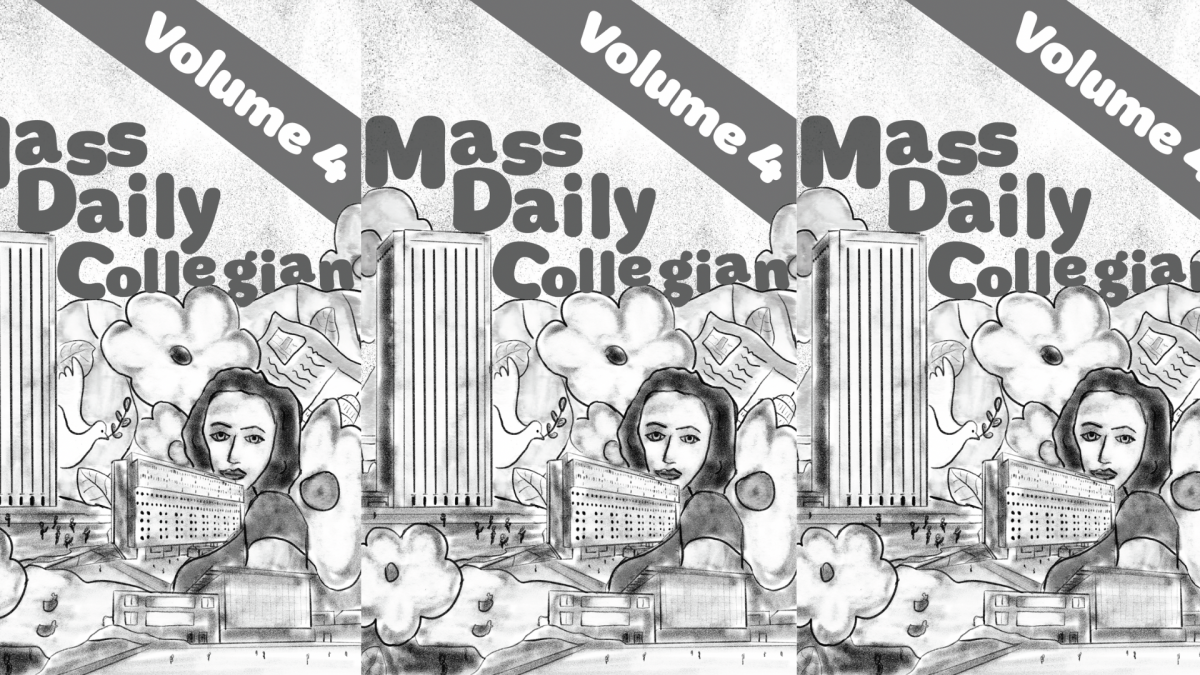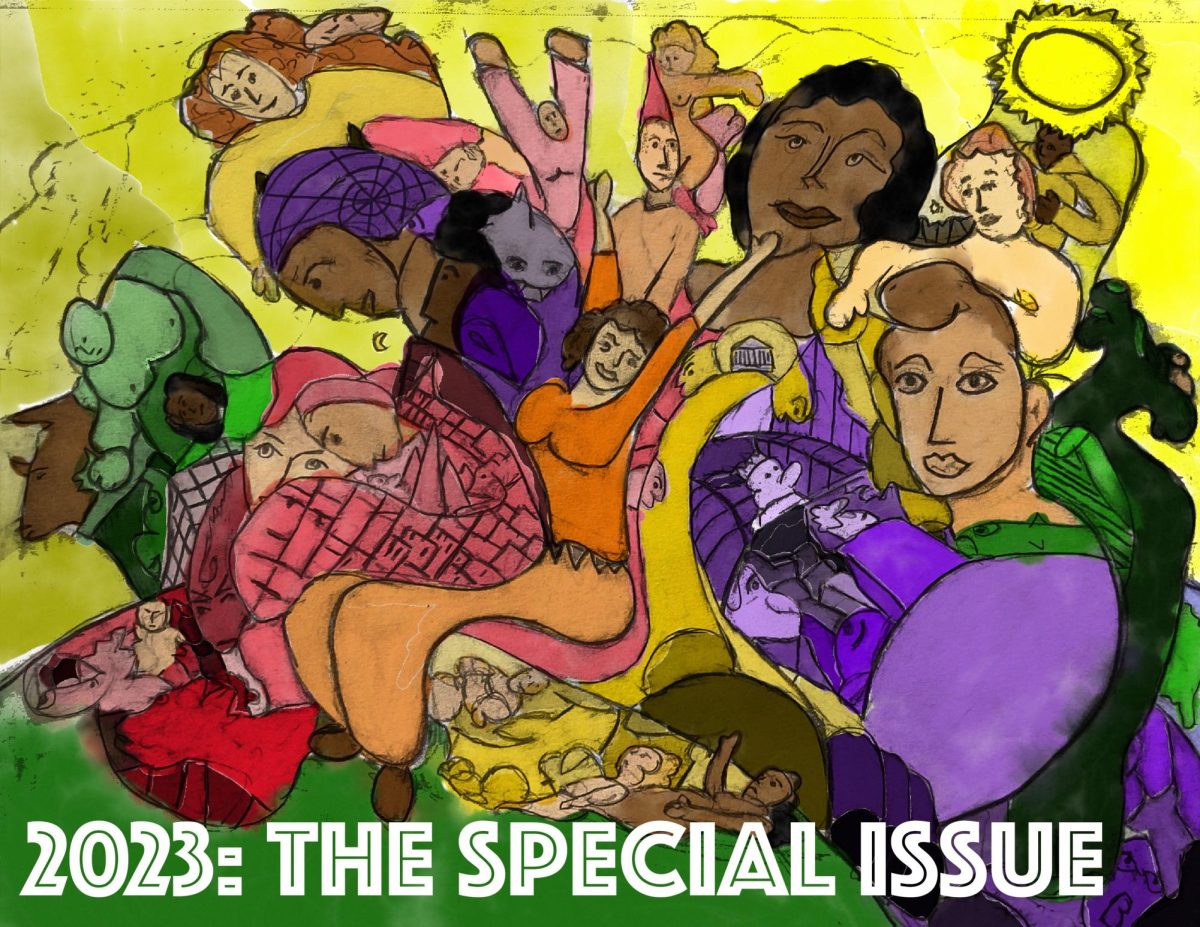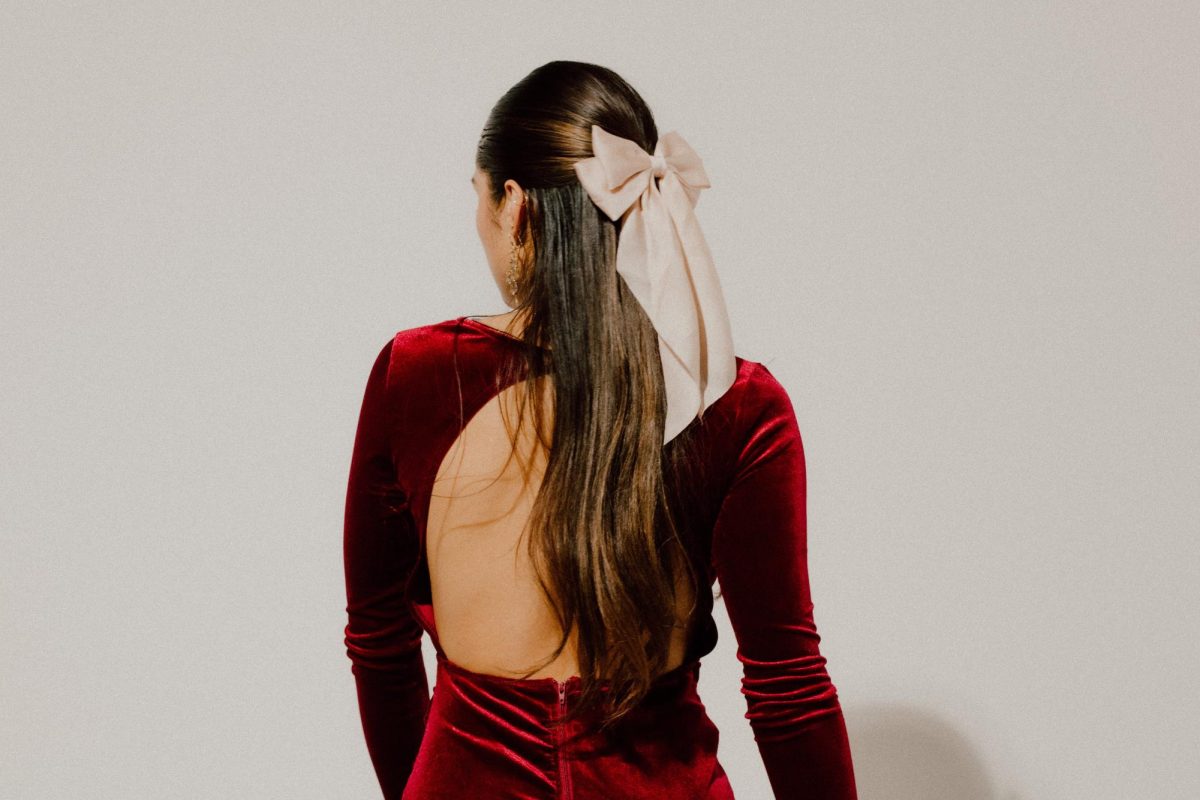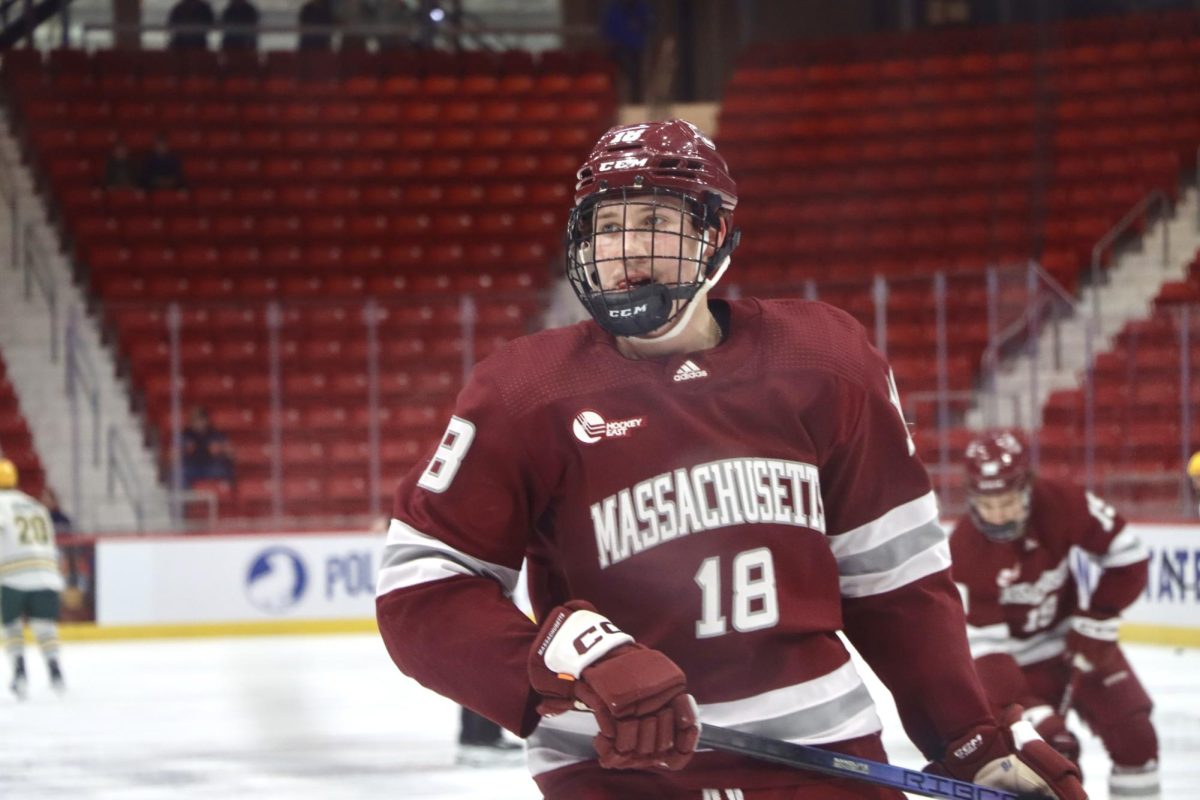The collective energy of brotherhood, resilience, and belonging echoes throughout The Miracle Machine, a collection which focuses on the essence of being a Black male while highlighting the deep connection and vulnerability between the collaborators. In the New Africa House’s Augusta Savage Gallery lies The Miracle Machine, a collaboration between Dr. Imo Nse Imeh, Kahlí Hernandez, JaJa Swinton, Xavier Merkman, Omarthan Clarke, Aaron Joseph St. Louis, Kevin Mason and Darius Mylze Johnson which opened to the public on Sept. 13, 2023. Aiming to eradicate the false ideas about the one-dimensionality and fragmented identities of Black men, the creators have put their heart and soul on display in these pieces to highlight their deepest fears, joys and insecurities around being a Black man in America.
The leader and co-curator of the collaboration is Dr. Nse Imeh, a professor of art at Westfield State University. His original concept for the collaboration involved inviting Joseph St. Louis, a poet, to create pieces based on the ideas of Black residence and home.
“Black men are cultural nomads,” Dr. Nse Imeh explained at the Artist’s Talk on Nov. 2. “We have a way to create home inside us.”
During the artist’s talk, Joseph St. Louis was referred to as the adhesive glue of the team, as his work was able to unite the other collaborators’ experiences and emotions into one cohesive gallery show.
“I wanted to bring the stories to life by adding more content to each piece,” Joseph St. Louis said.
As Kahlí Hernandez was added to the project, the themes remained the same. Yet Imeh stated that he knew that the project was bigger than he imagined. Now the connection between the collaborators is stronger than ever, as the group chat they created during the project still cracks Imeh up late at night when he’s supposed to be preparing for his lectures, he described. Imeh remarked during the Artists Talk that this project has been the first time he’s felt on the same wavelength as other collaborators in 40 years.
Despite this, there was true, concrete fear felt by many of the artists involved. For Imeh, that fear was centered around that gallery space not being safe.
“I didn’t want to turn the black body into a spectacle,” Imeh said. “There’s a lot of personal stuff here, and I didn’t want to George Floyd another man. That’s why we barely used the word exhibit.”
In a similar way, Omarthan Clarke, another contributor, felt fear because of the subject manner of his pieces: his insecurities and fears.
“My pieces talk about a process I’m experiencing for the first time, and these reflections aren’t always about things I enjoy,” Clarke said. “Am I telling our business? Do I really feel safe?”
However, despite concerns, enough space and time was provided to each artist to produce pieces that are incredibly personal, beautiful, and thought-provoking to experience. Although the Augusta Savage Gallery is contained in a small room, the pieces of the exhibit burst forth with color and emotional depth.
Xavier Merkman, a sophomore art major at Westfield State, produced a piece that encapsulated his inner turmoil of being proud of his Blackness while being frustrated by being Black in America. His piece is a self-portrait titled “Inner Turmoil,” which contains all his questions and frustrations about his identity in America; his positive feelings are written in gold, his questions about being Black in America are in blue and his frustrations are in a light purple. Merkman’s portrait lies at the center of the work; its appearance is made to look as if it was constructed with old newspaper clippings.
“I’ve always been obsessed with colors. As a toddler my mom would drive me around the city because of how much I loved the Christmas lights,” Merkman explained in his artist’s biography.
“Now it’s my turn to paint my environment, light up my own walls. My opportunity to finally answer the questions left to me, just to respond with deeper ones. I was born into colors. Engulfed in and influenced by them. Now, I breathe life into them as an extension of my own being.”
Kevin Mason, who has been a musician for 20 years, created a visual and musical experience titled “Meditation 1” where he aims to connect the past and present. With this piece specifically, Mason hoped to create a biome that places the listener into a limbo between the physical nature of the world and the conceptual center of the mind.
“I hope to transport the listener to a place outside the day-to-day experience; somewhere where myself and others can feel safe,” Mason said.
Mason’s piece in the exhibit shows him meditating surrounded by greenery. By showing a Black man in a way they are not usually portrayed, he hopes to shift the narrative of Black men to be more focused on their gentle and introspective side instead of the rough stereotype’s society places on them.
Jaja Swinton’s collection, “Beauty for Ashes,” contains three pieces titled “The Persistence of Memory,” “Unquenchable” and “Home (Kristina, work in progress)” which acts as a documentation of his trauma and loss. The vibrant colors of the pieces contrasted with cooler earth tones, mixed with various portraits, attempt to portray his struggles; of redefining his relationship with his kids, dealing with a court system that does not usually listen to Black fathers, and his escape from his toxic marriage into a loving and peaceful relationship. He wants to stay resilient and stay connected with his kids, but his struggles with the court system have heavily impacted his relationship with them.
“The paintings are ‘journal entries’: they’re safe spaces for me to process my grief over the loss of access to my children,” Swinton said.
“But they’re also ‘letters’ to my children, expressions of love and hope … for their future and mine.”
Swinton also has another piece in the gallery titled “Resilience,” an acrylic painting on an aluminum panel with pieces of acrylic transfers, glass, metal, opal, and dinner plate fragments. The only information provided for the piece was the definition of the word written on the wall. “Resilience: the capacity to withstand or to recover quickly from difficulties, toughness.”
Omarthan Clarke’s pieces titled “Black Man Meets Love & Conception,” “Black Man Meets Black Boy Inside” and “Black Man Meets Fatherhood,” a series of oil paintings on canvas, depict his love and care for his son and wife. By doing so, they highlight his transition to becoming a father. Although Dr. Nse Imeh told him at the beginning of The Miracle Machine’s growth that he could not work on the project, as there was too much going on in Clarke’s life at the time, it only made Clarke want to be a part of the collaboration more. Through his pieces, Clarke wanted to record, not just the experiences of raising a baby boy, but document the metaphysical change that occurred in his mind, body and spirit through the paintings.
“I believe there are moments when the temporal synchronizes with the spiritual,” Clarke explains in his artist’s biography.
“In these moments, humanity is at its greatest. Whether it be a spectacle or not, something beautiful happens.”
Kahlí Hernandez, who has been drawing since he was four years old but has been creating art professionally for two years, has pieces titled “R.Y.G.,” “Spin Back Spread the Opps,” “Plumbline” and “The Comforter.” The artworks are a mixture of mediums with bold colors that he hopes will create a portal for the audience to see something they don’t normally experience with art. These pieces specifically highlighted the importance of belonging and self-love and how that reflects onto others as people go through life.
“We all have god-given abilities,” Hernandez explained when describing the meaning behind his pieces. “You have to see what you do well and lean on that. Only then will your quality of life grow.”
Mylze Johnson, CEO and founder of Visionary Acts, ties the entire collection together with his photography series of the artists at work on The Miracle Machine. As a respected photographer and videographer, Mylze Johnson perfectly captures the essence of the collection and the hearts of everyone involved in its creation.
“The main question for me was how can I capture the moment of artists in one room,” Mylze Johnson explained. “I knew most of them from past experiences, but it was really my skill set that allowed me to capture the artwork and these artists in their natural element.”
Mylze Johnson’s short film, “Slowly Built, Quickly Taken,” is also present as a part of The Miracle Machine. This film demonstrates Dr. Nse Imeh’s project in 2018, “17 Years Boy,” which reflects on the brutal killing of Trayvon Martin as a way to confront a collection of racist incidents that occurred on Westfield State’s campus the same year. The project ended with an unexpected tearing and breaking of a painted portrait of Trayvon Martin by Dr. Nse Imeh as a way to express the pain and suffering of Trayvon’s murder and to inspire dialogue between Westfield’s students about their actions.
The heart and power in each piece of The Miracle Machine shines brightly, but the power of the pieces is amplified when they are viewed as one cohesive story: the story of Black masculinity and its intricacies that society has widely ignored in favor of harsher and unrealistic stereotypes. At its core, the gallery gives these Black men a space to fully express every part of themselves and release their frustrations about the lack of space there is for them in America. They are putting all of their fears and insecurities into their work and telling us to look, to truly see them for who they are in a world that is so against them.
“Make space. And if there isn’t enough space for you to express yourself, make it,” Merkman said at the Artist’s Talk.
The Miracle Machine is open until Dec. 8. The times and dates the gallery is open are on the Augusta Savage Gallery website.
Carlie LaFauci can be reached at [email protected].




















Greg Pretlow • Nov 28, 2023 at 6:48 pm
Wow this is amazing!!!!